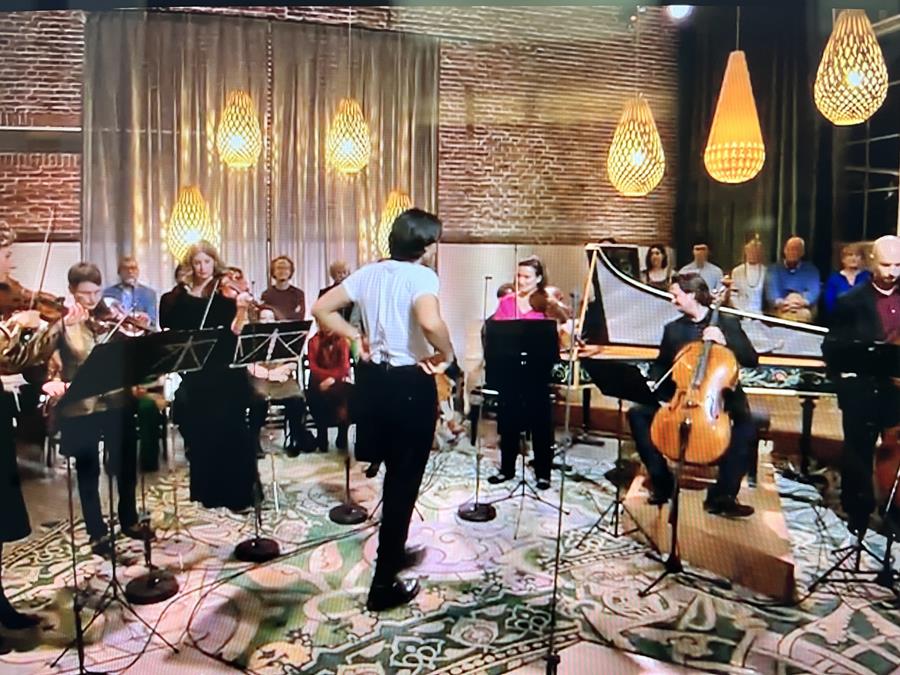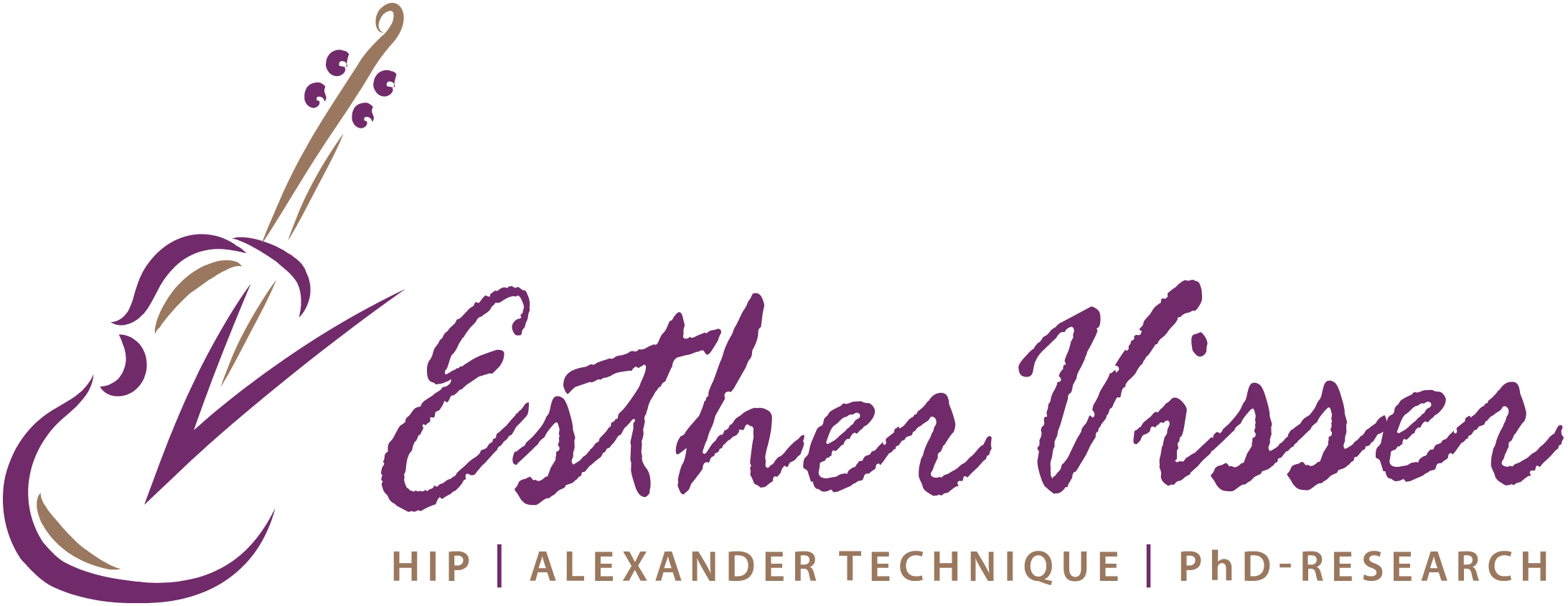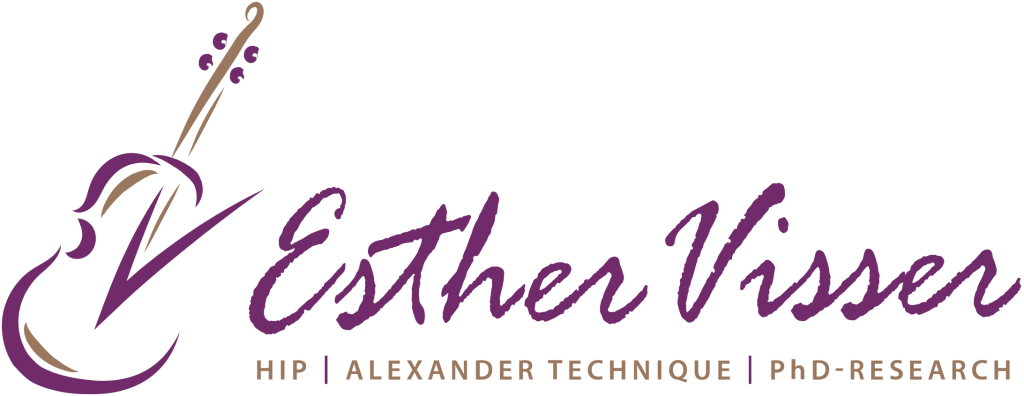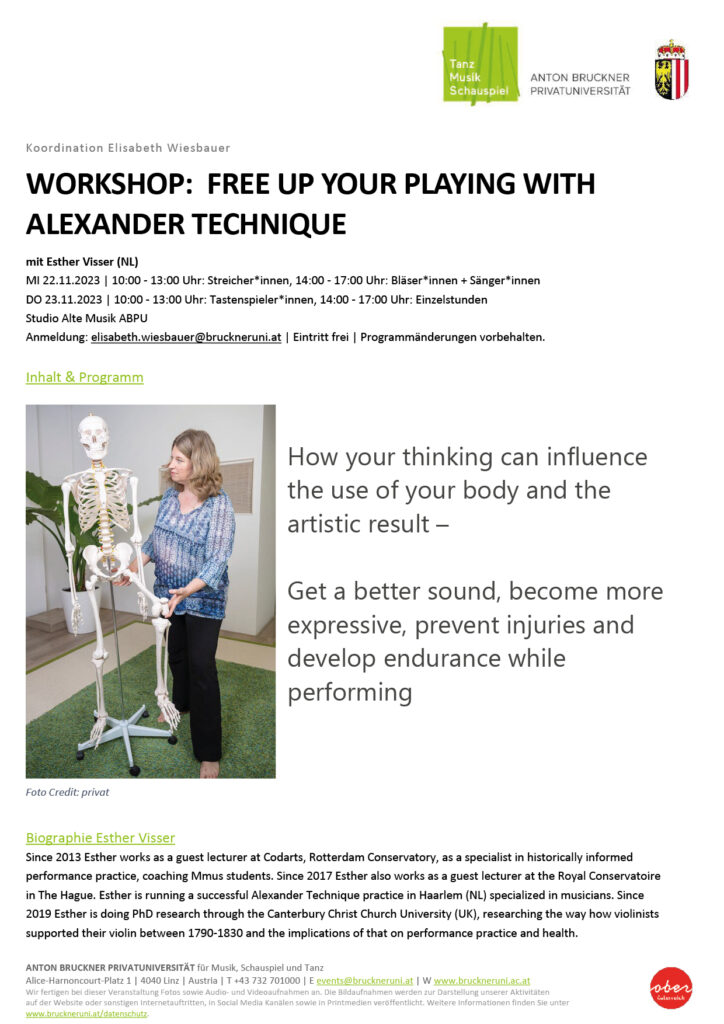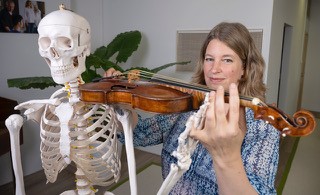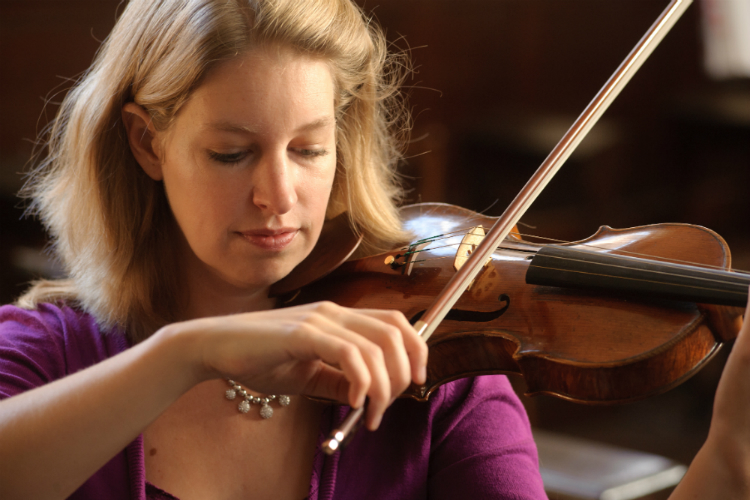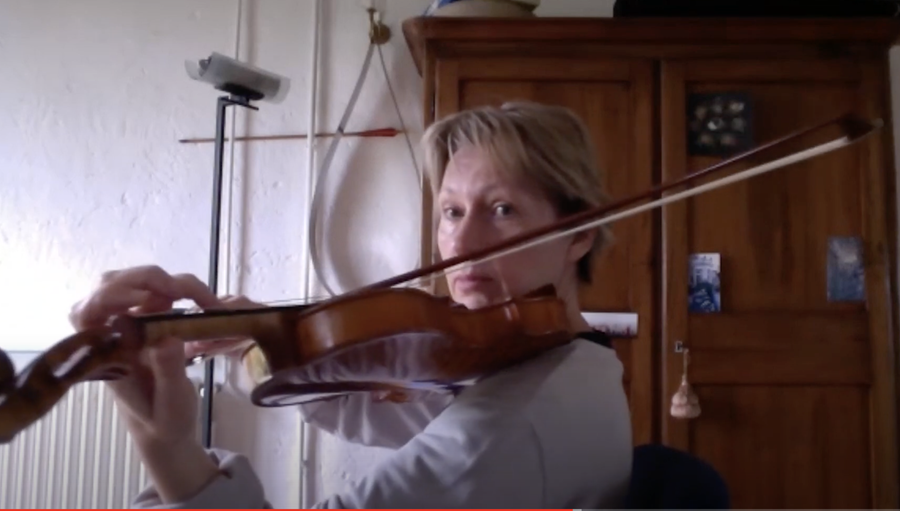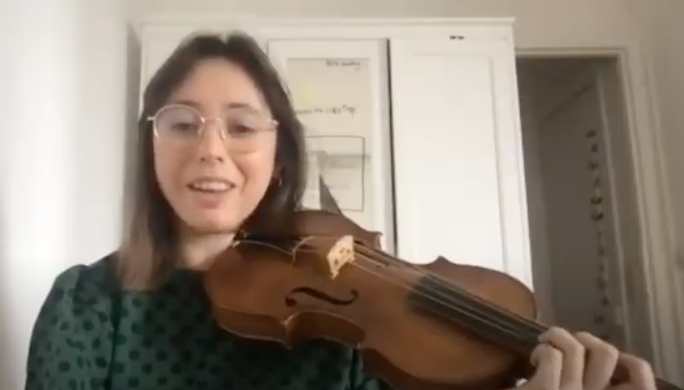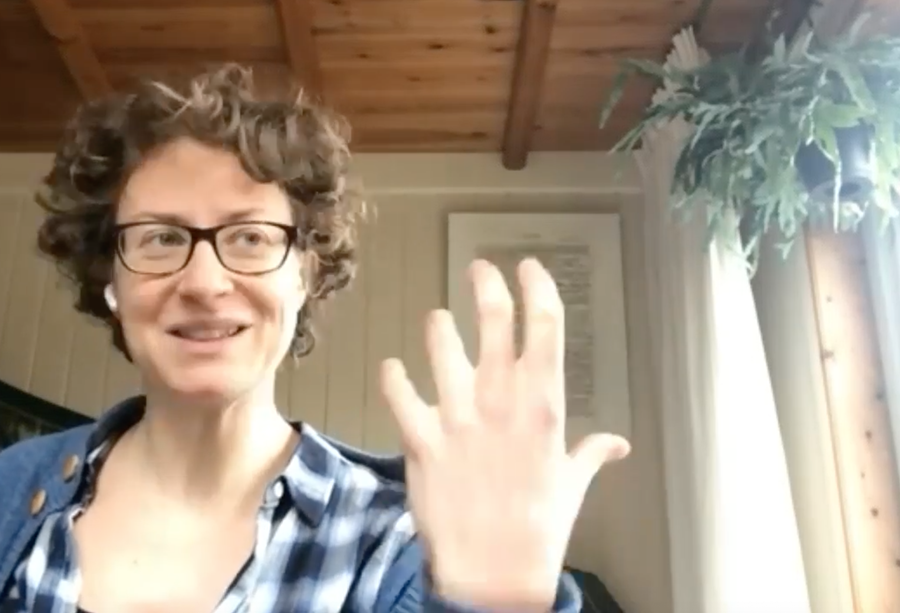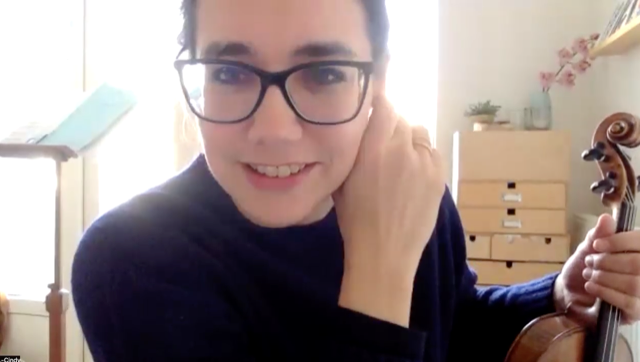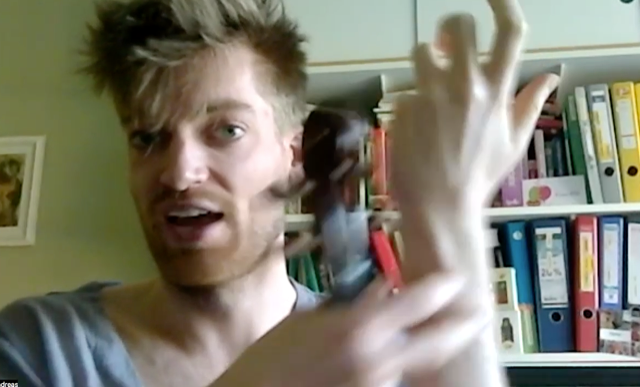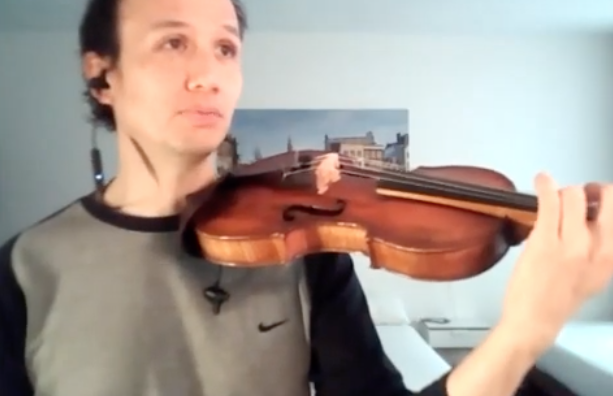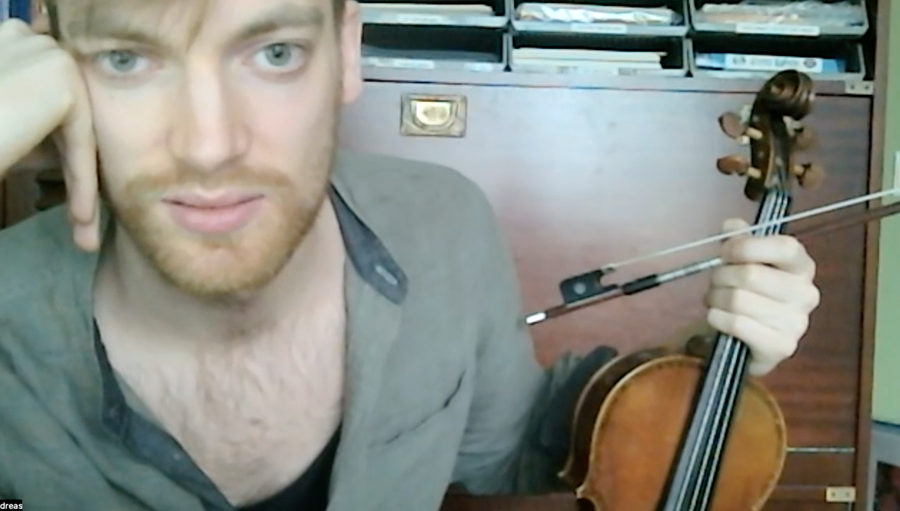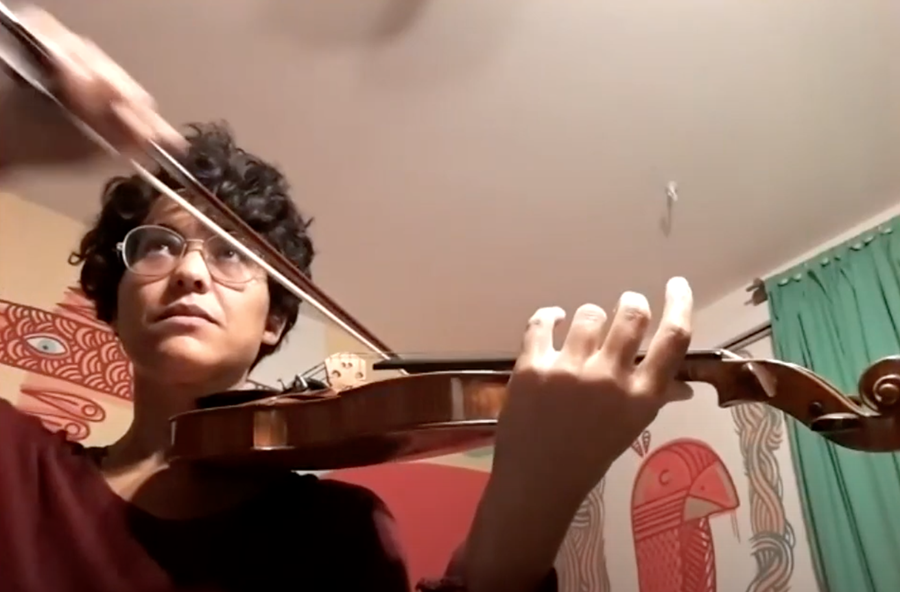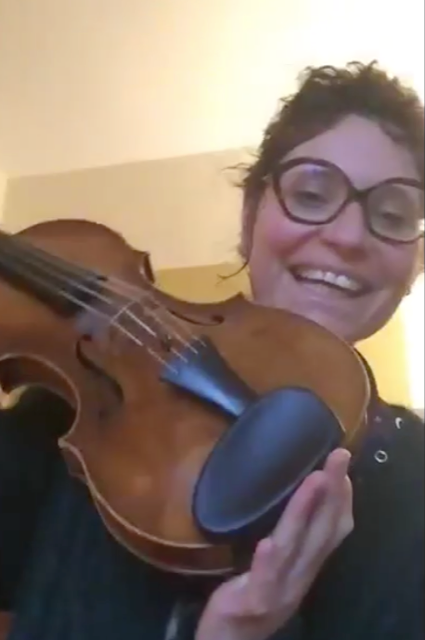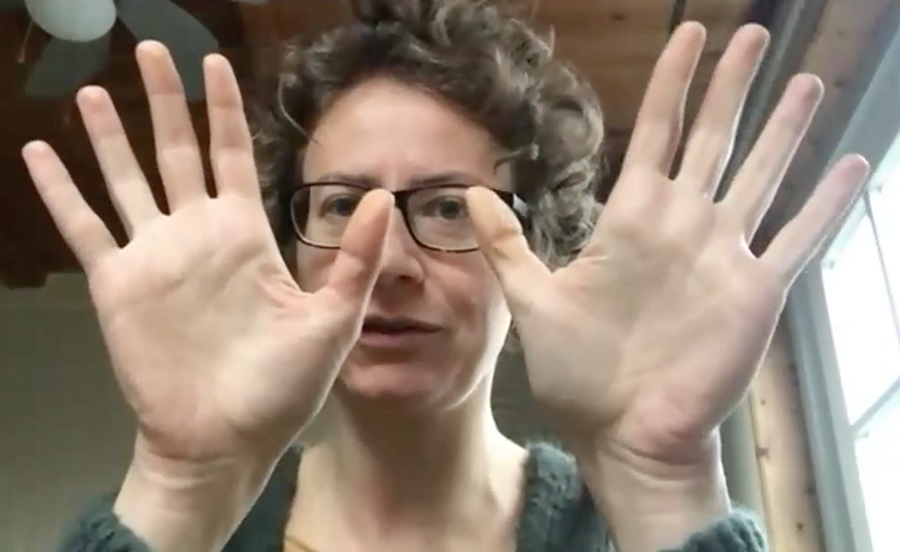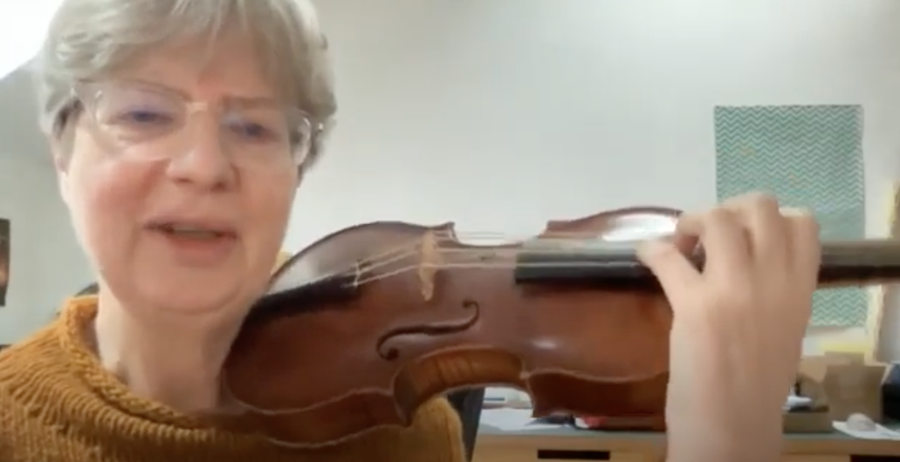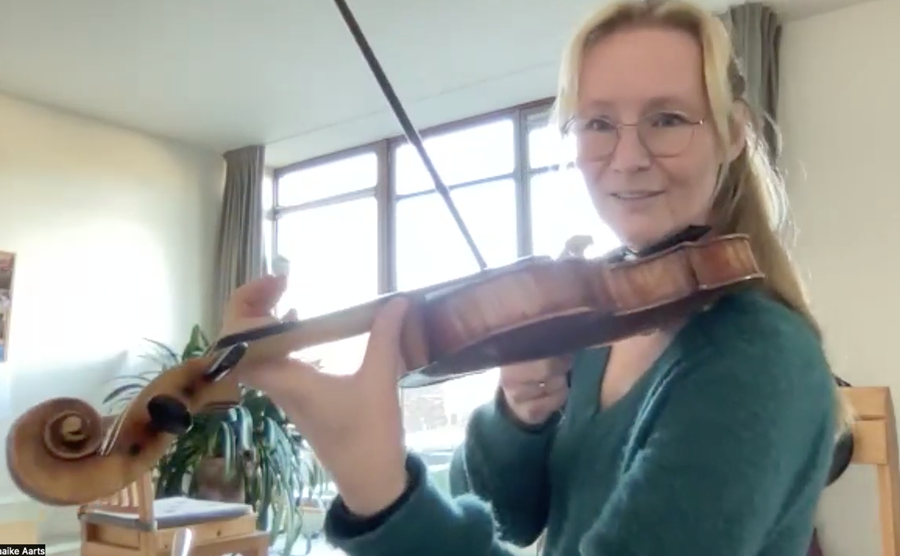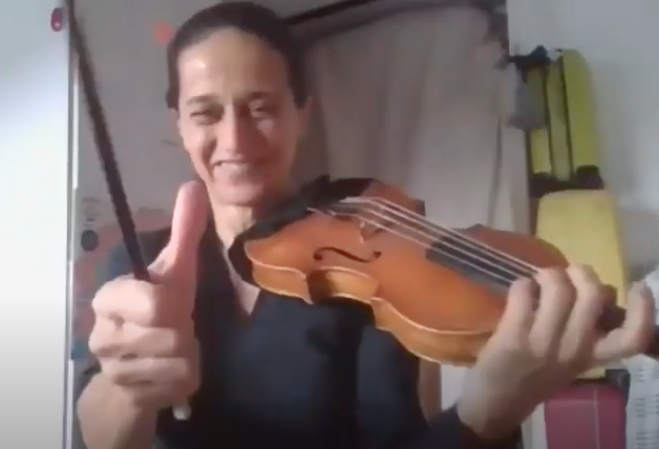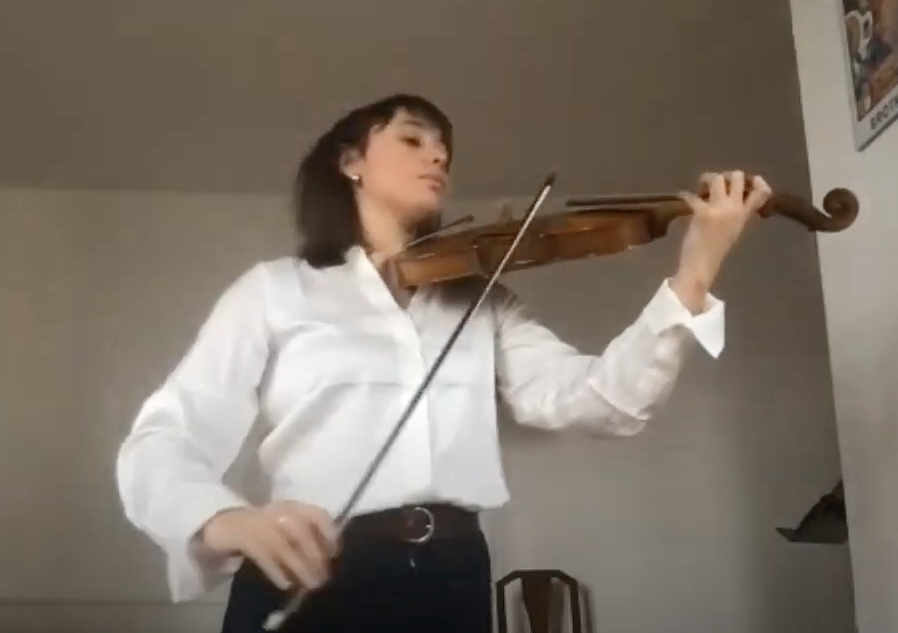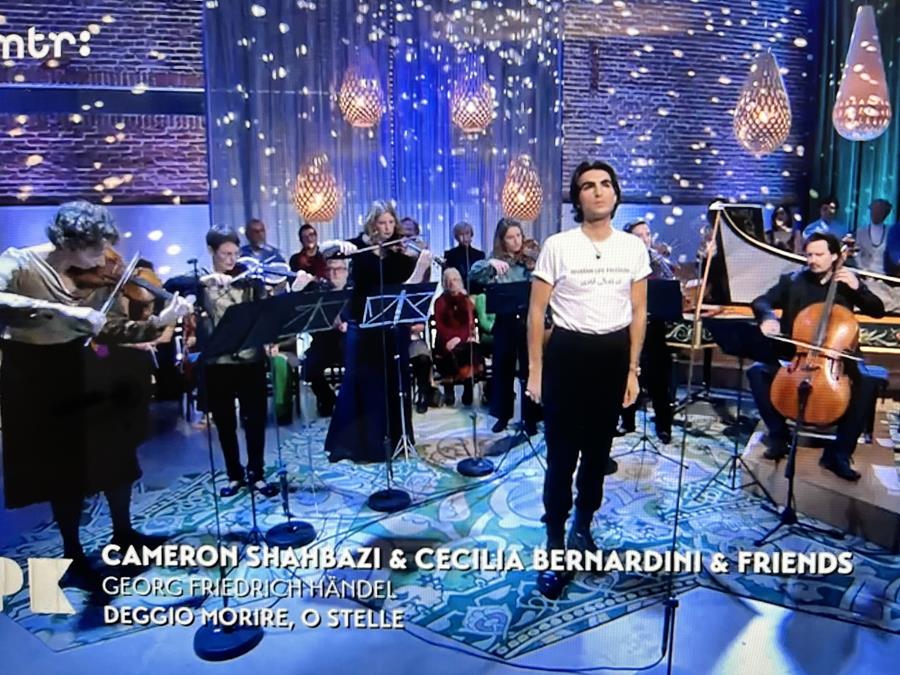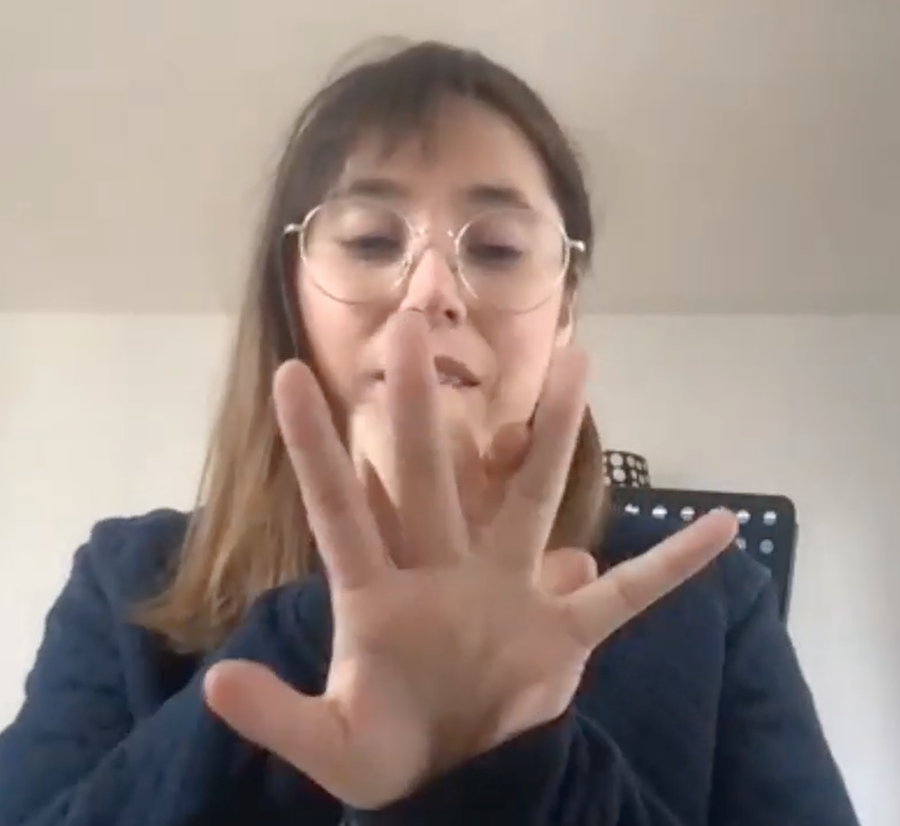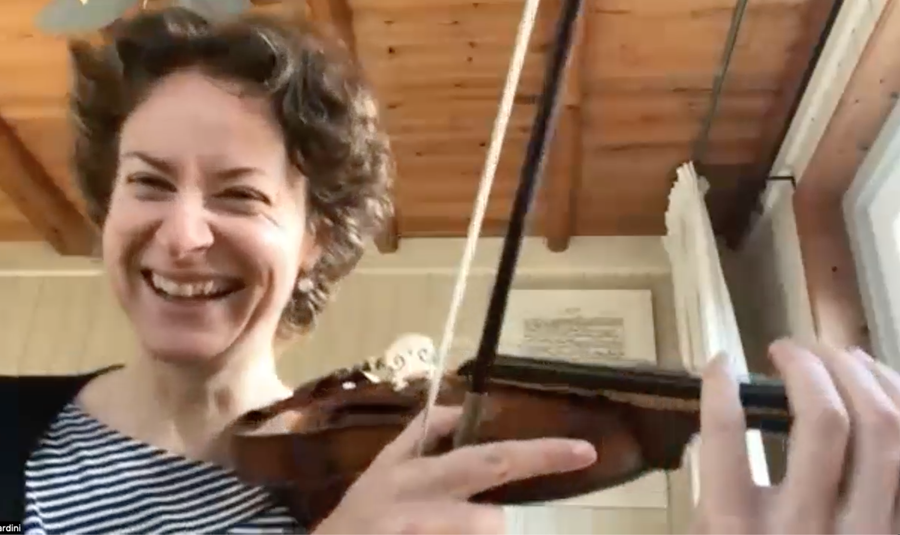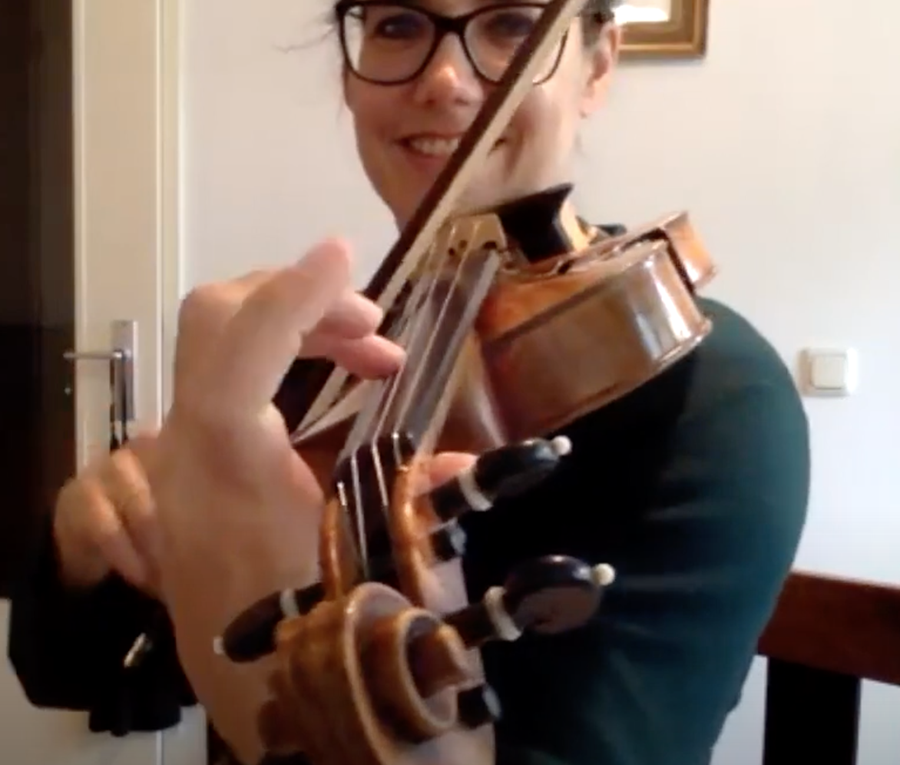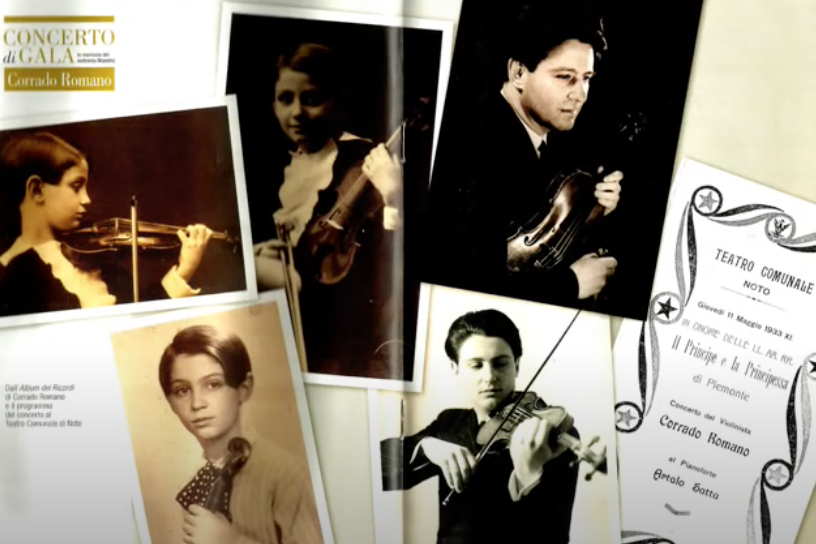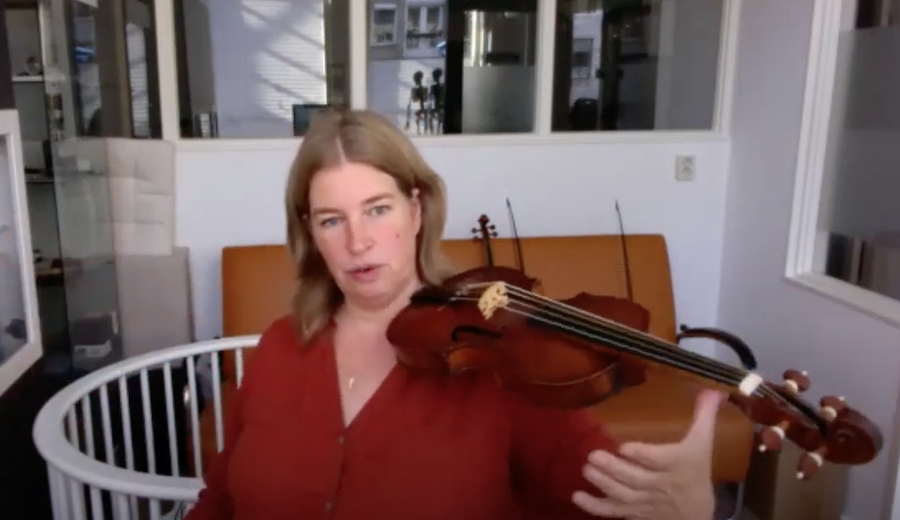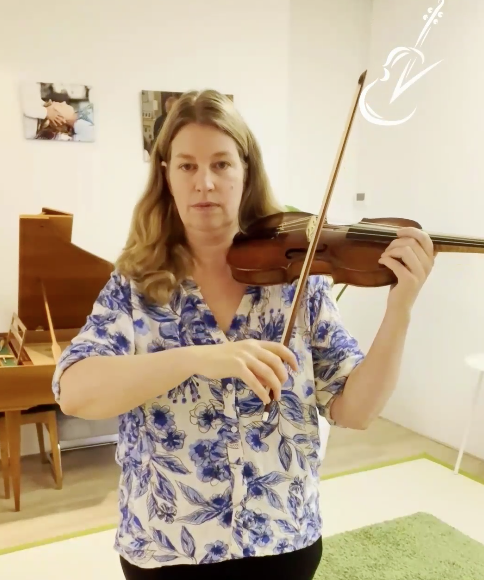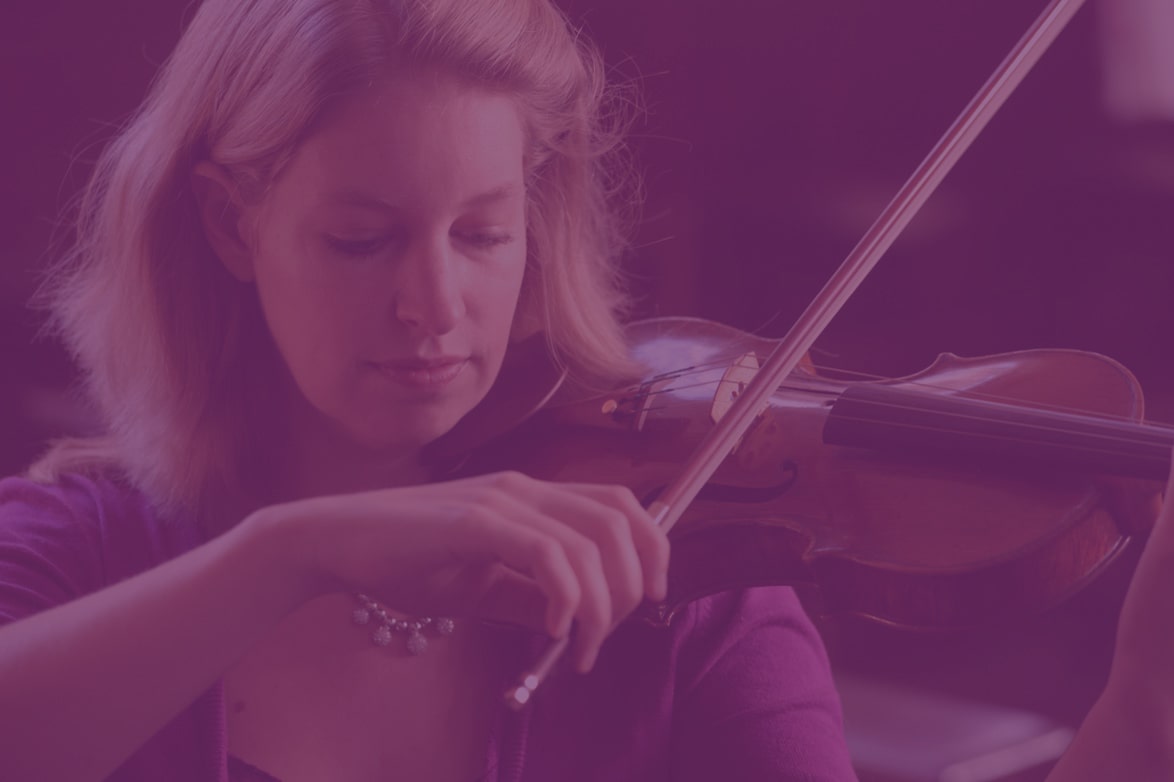
The 15th week of my experiment
Hi everyone,
This is the 15th week of the experiment on playing without a shoulder rest and / or chin rest. Here are some updates and some feedback.
Thank you for sending me your videos, it’s really important for my research. Some people just finished the whole 12 week program, sent their last video and filled out the exit survey. Fantastic, thank you so much! The majority however is still about half way in the program and that is perfectly fine, please do take all time you need and don’t hurry.
Again, some more new participants joined as well, welcome to Byron! Many people already filled out the entrance survey. Thanks. If you didn’t do it yet, please do so before you start the lessons.
If you know more people who like to join, for example starting this or next month, this is still possible through my website. If you missed the newsletter last week, you can still read it here. There is a collection of past newsletters at my website available too.
Please be welcome to join the Zoom session next Wednesday 11.00 AM (Dutch time) if you want… Just to meet or to ask some questions. Would be nice to meet up. You can watch Zoom sessions back on the login page where the video lessons are, as well.
“I think your research is very important and I think you are very right on all the points you raised. I am so thankful that your talk about this, because almost every musician has unhelpful habits.”
– Jun Keller, Vienna Philharmonic Orchestra,
participant in the experiment
15th Zoom session
Last Wednesday we had a 15th zoom session with some participants of this experiment. It was lovely. If you want to watch it: I recorded the session and there is a link to it in the login page under the video lessons.
Ingrid from The Netherlands joined us first and she told us that she had been rising Africa for 2 weeks in the Christmas holiday. Just before she left, she was finding a very nice and relaxed way to make the glissandi in lesson 5. After returning form the holiday, she made a recording for this experiment and it still worked very well, it looked beautifully and I (Esther) was happy to see it. However, today she has sweaty hands and now it becomes much harder somehow. We started to work on it together.
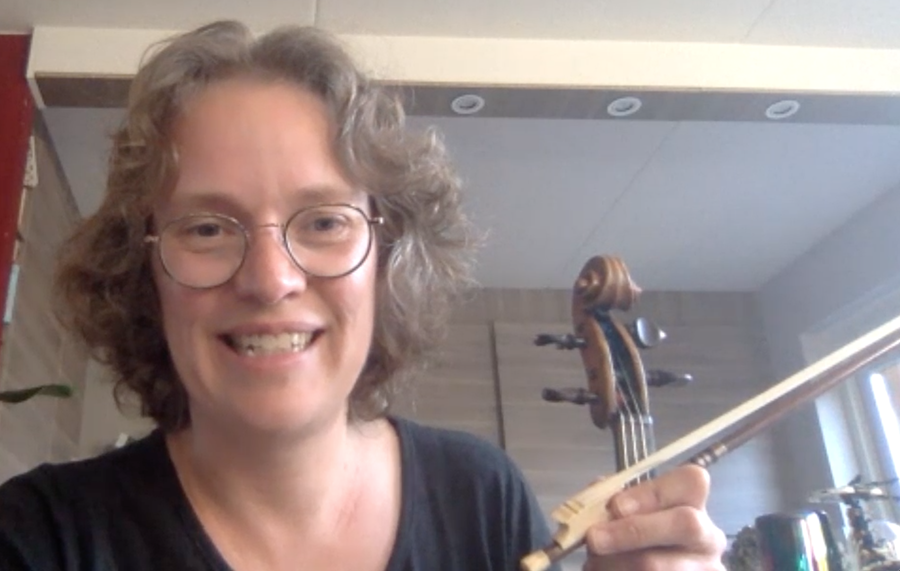
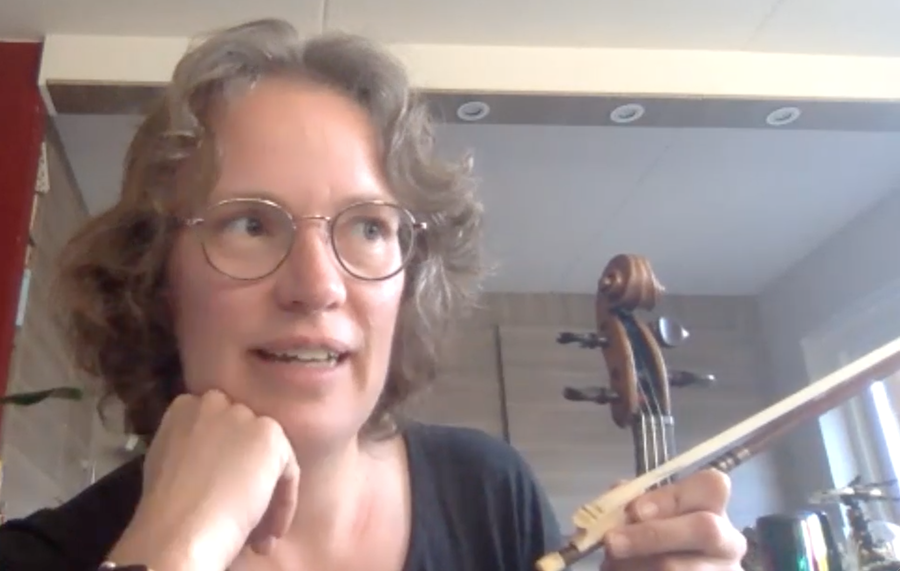
She is experiencing that her thumb has more resistance when it is sweaty, so the glissando is harder to make, and it slips up quicker. I asked her to use the thumb by purpose in ‘wrong’ way: supporting the neck with the joint in stead of with the soft part of the first phalanx. She felt that it is more slippery in that way (I saw her doing that jin her video sometimes). When she now used the soft part of the thumb all the time the support was more secure, even while being sweaty.
Ingrid also showed her her new chin rest (a Wittner chin rest in the middle, with hypo allergic plastic), which somehow now allows her to keep her violin with her jaw while sliding down in a glissando.
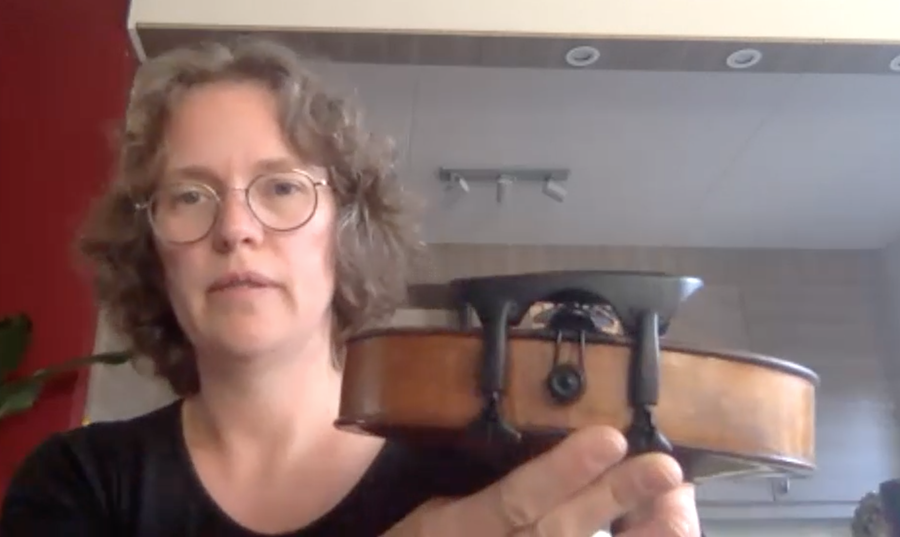
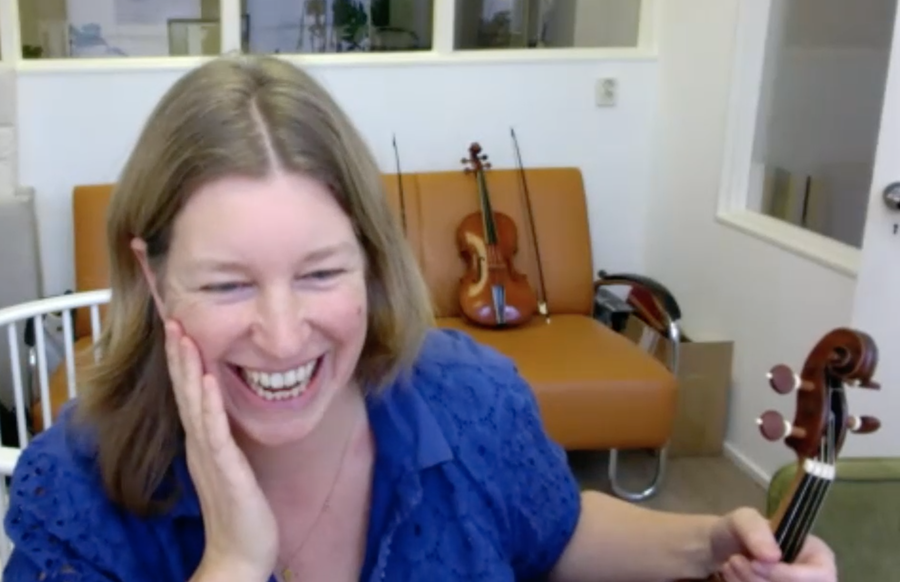
We worked on keeping a connection between her finger and her thumb while sliding down, to provide her with more stability even when her hand is sweaty.
When she tried to do this, we saw her thumb joint collapsing as I noticed earlier in this session, so we practised together the exercise we had been developing together with Nicolette in last Zooms session, to first become more aware how the thumb works (starting at the wrist!) and then relax the muscles that are too developed and to learn to develop the muscles that are not used enough. We need to re-educate the use of the thumb.
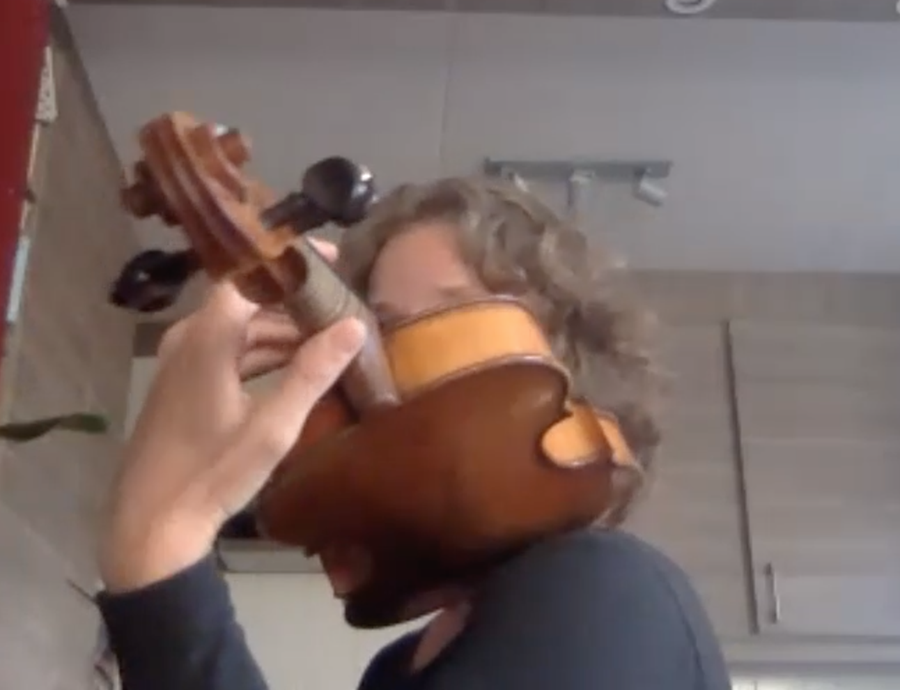
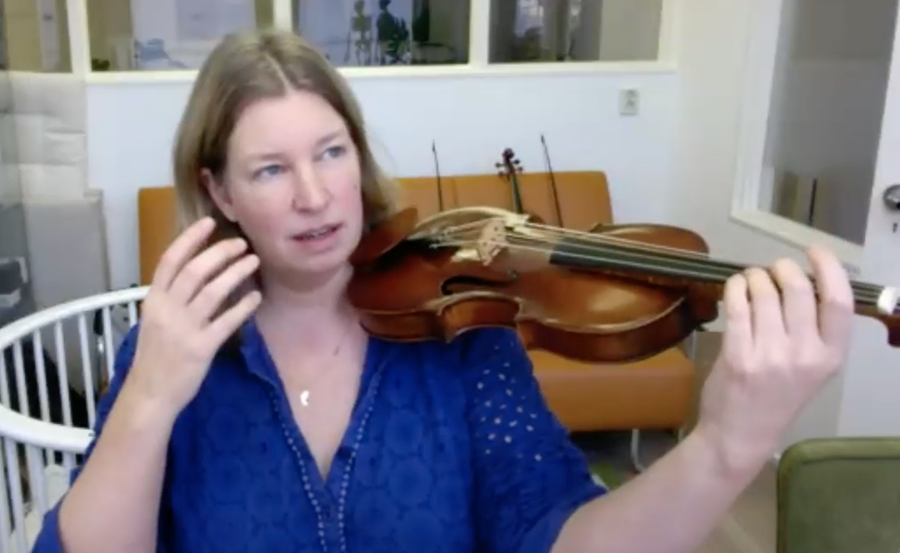
She told us that just before she left for Africa a lot of things fel into place for her, but she thinks it will take quite some time. I assured her that that is absolutely no problem and it is important to take as much time as she wants. We agreed that first she needs to become comfortable in supporting the violin without sweaty hands and then it will slowly become easier with sweaty hands as well.
Then Cindy from Amsterdam joined the Zoom session as well and told us that she had been ill in the Christmas holiday and therefore had the time to watch a lot (!) of our zoom sessions. She tells us that she is still at the glissandi lesson, just as Ingrid is. I explained to both of them that this exercise of course is the most extreme situation for the left hand, but I chose it because if you can do this, you can do everything.
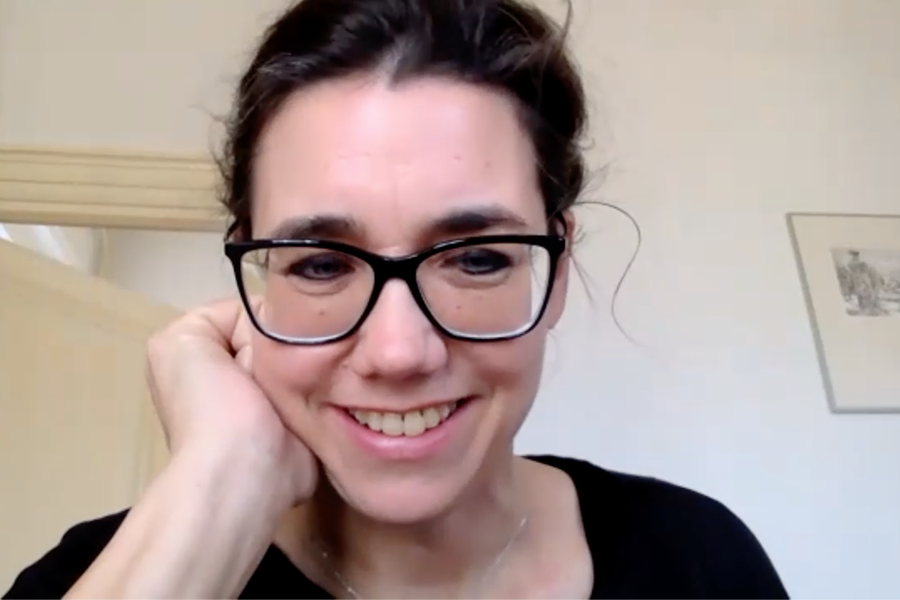
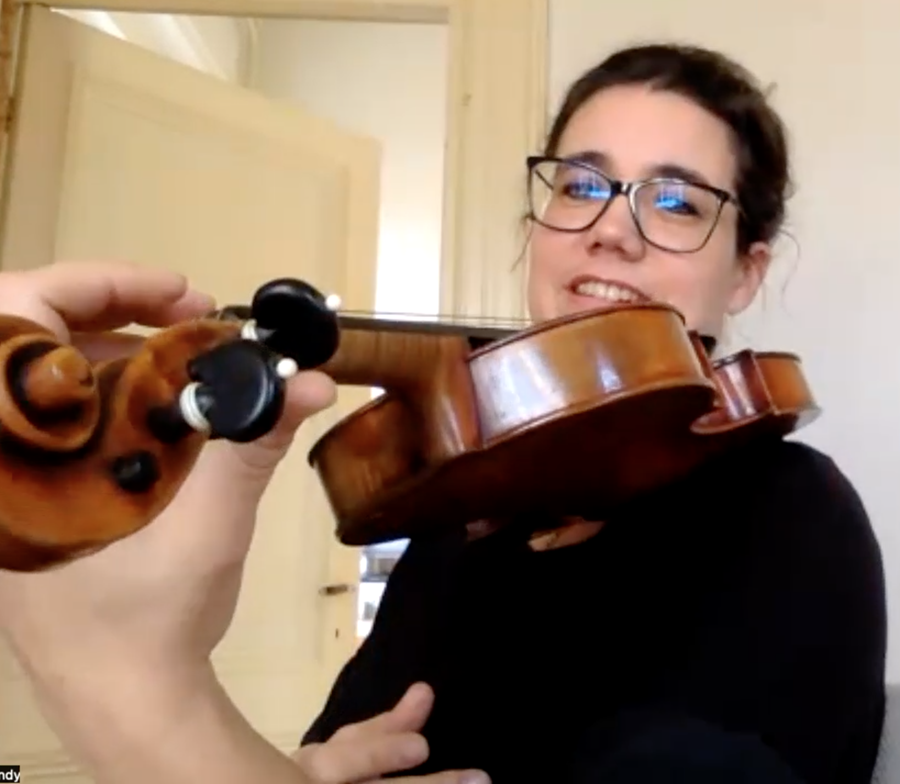
Daniela from Italy also joined the session and we told the others that Daniela and me had been discussing the shape of the neck of the violin last week, in a what’s-app group with people who are interested in period string making. It appeared that some violins with original necks are having a kind of ‘V’ shaped neck. This is very interesting to me, as it king of ‘proves’ that keeping the thumb horizontally under the neck was not really possible (as there is the point of the V) and that the position of support in these violins probably was exactly diagonally as I also suggest in this experiment. Daniela had been trying these instruments and it feels much easier to make glissandi using these necks.
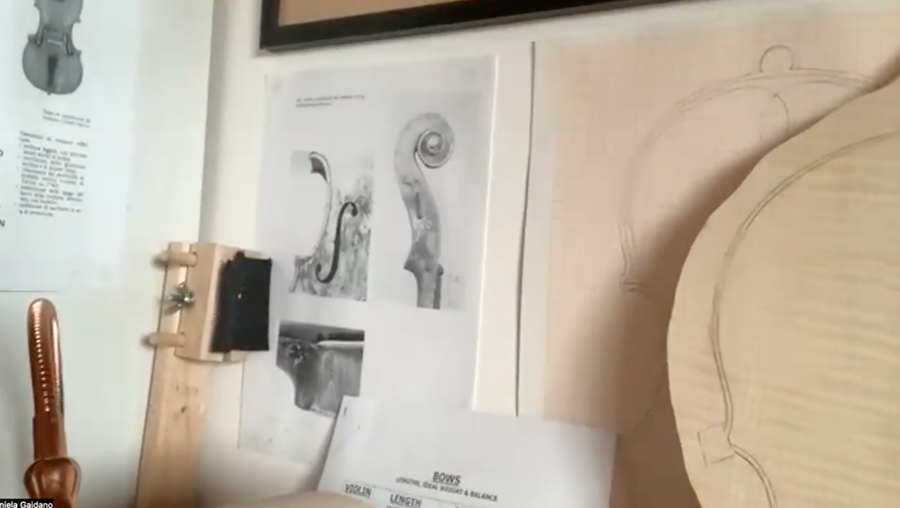
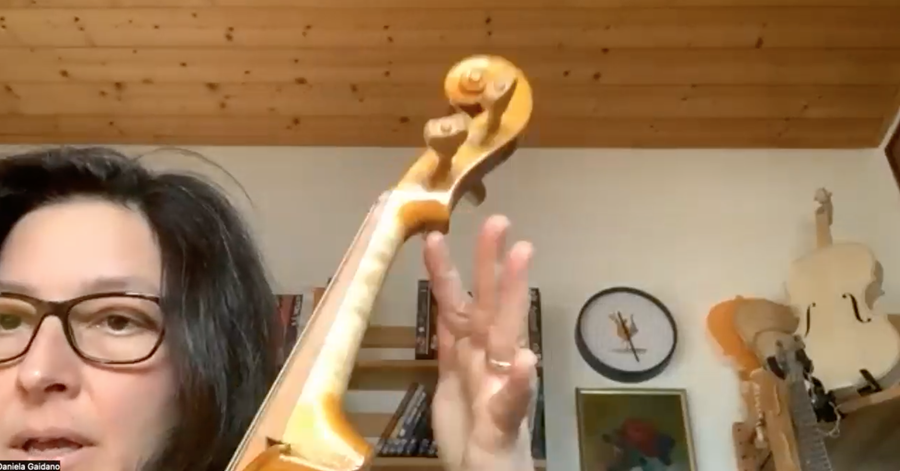
With a V-shaped neck, you would also have more surface for the contact with the thumb than with a round shaped neck. I now started wondering if perhaps the change to the ‘modern neck’ around 1800 (from straight to slightly backwards) could have gone together with a change from V shaped to round, as this is around the same time (1830) that Spohr introduced a chin rest. Maybe that is why they felt they needed more help in supporting the instrument, especially while gliding down during positions shifts? Maybe some newsletter readers have thoughts about this? Please do let me know!
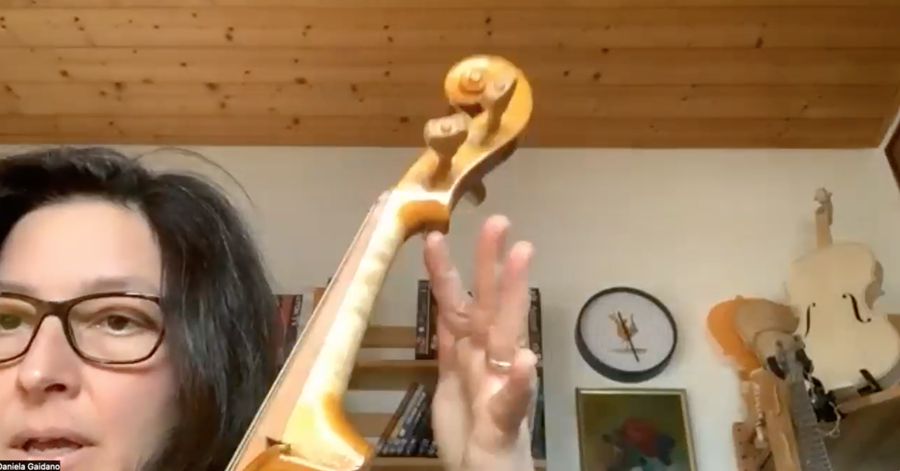
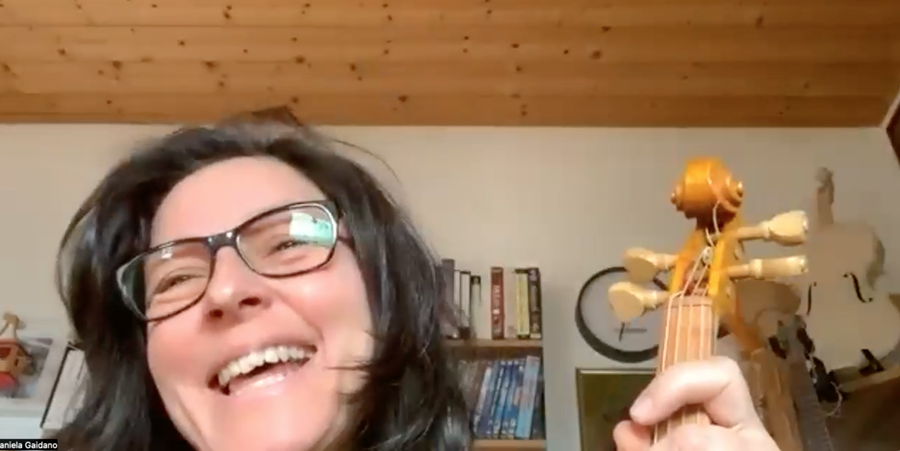
We then discussed if maybe Joachim did perform the Brahms concerto playing chin-off… Daniela and me both think so! Anyway, she then had to go, so we said goodbye.
Then we continued with Cindy her question, as she told us that her habit to use a ‘hollow’ left thumb (because of double jointedness) is so strong, that she feels she almost ‘has to talk to her thumb’…and I answered: “Yes, that is exactly what is needed, you have to talk to your thumb!” 🙂
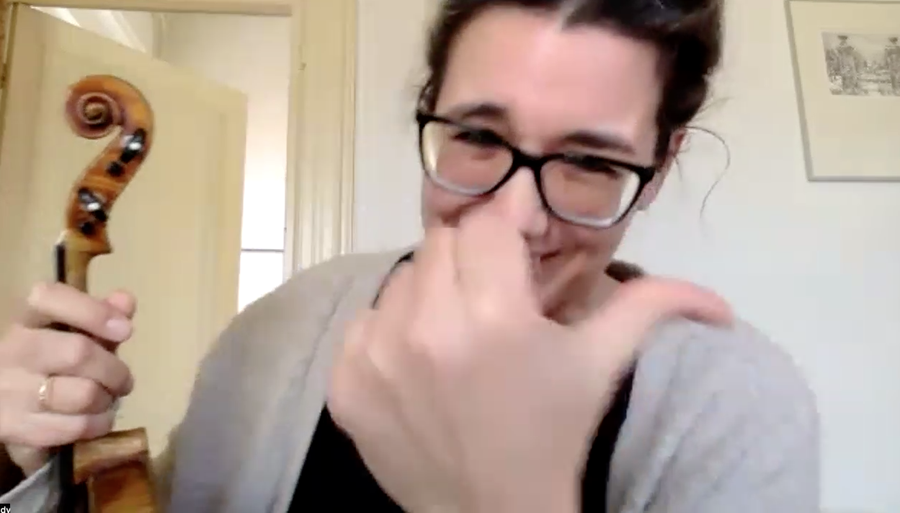
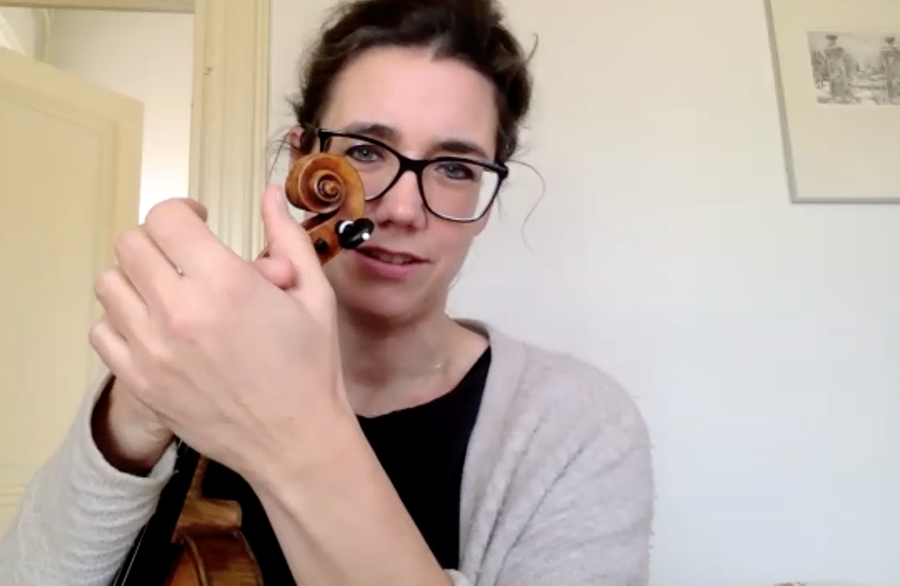
Ingrid suggested to Cindy that perhaps it would help, just as it did with her, to think about the function of the thumb and really use it from the beginning of the first phalanx (close to the wrist), to obtain a rounder way of using it.
Cindy realised that perhaps she need to go back to lesson nr 3 to review to open feeling in the hand when placing a finger and the thumb on the violin. I agree with that. Maybe also because she had a break by being ill. it can be good to revisit lesson 3 for a few days and then continue with lesson 5 again. Maybe also place the thumb somewhere apposite the second finger, as we discovered many advantages for that in some previous zoom session.
So in this zoom session Cindy and me built up again the use of the left hand together and she already felt much better. I advised that she would do that for a couple of times per day in the next days. If you feel stuck starting up after the Christmas holiday, maybe for you (reader of this newsletter) this could be a good idea as well.
Cindy was happy with this, as she told us that in general in her playing this always has been one of the biggest obstacles: that she felt tension around the side of the left index finger while playing, and this other way of support seems to tackle that problem.
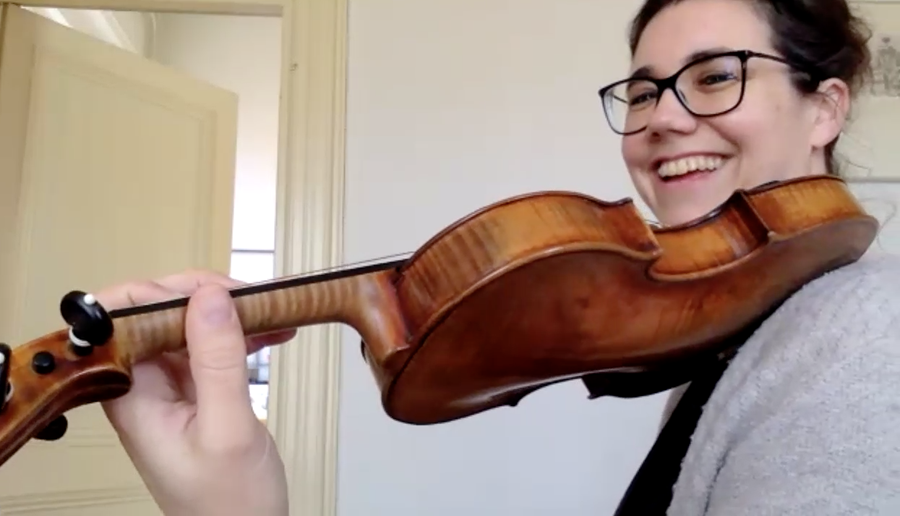
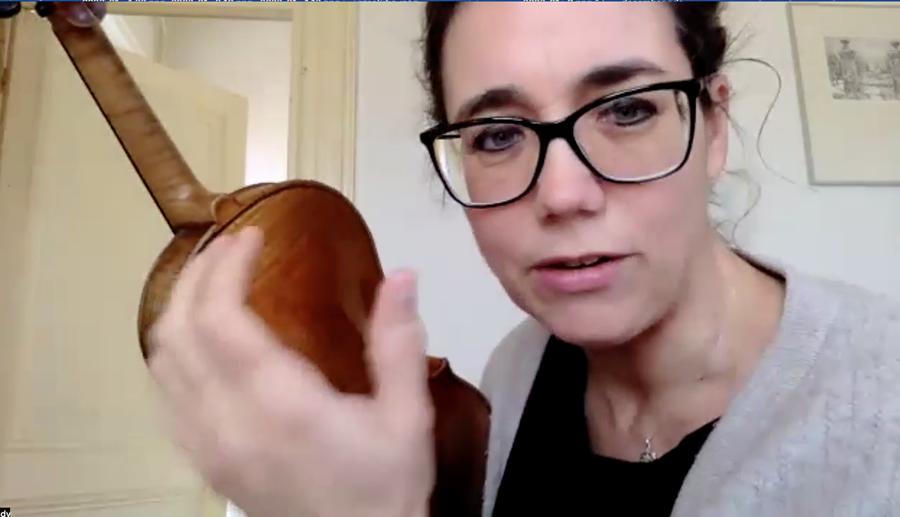
Ingrid did this exercise with Cindy and me together, and she had the question that sometimes her thumb still seems to slip upwards along the neck of the violin. We tried to find a slightly more horizontal way, but without bringing the elbow too much inwards, more through relaxing the wrist and let it adjust (a bit towards your nose), because we don’t want to create tension in the upper arm. This adjustment of the wrist also gives more surface for the thumb to let the violin rest on.
I think the thumb has different functions:
1. supporting the violin (the horizontal aspect)
2. to have a connection with the fingertip that is playing on the string (the vertical aspect)
That is why we use it in a diagonal direction, as a combi between the two aspects.
And together, those to contact points (thumb and finger) have a direction going on towards your heart, through the violin. That also gives more stability.
Then Ingrid had to leave to take her children from school, but she really wanted to stay in the zoom session, so her husband decided to step in for her :-)… thanks! So she could stay with us. I am so happy that the participants in this project are so involved, motivated and cooperating together, really nice!
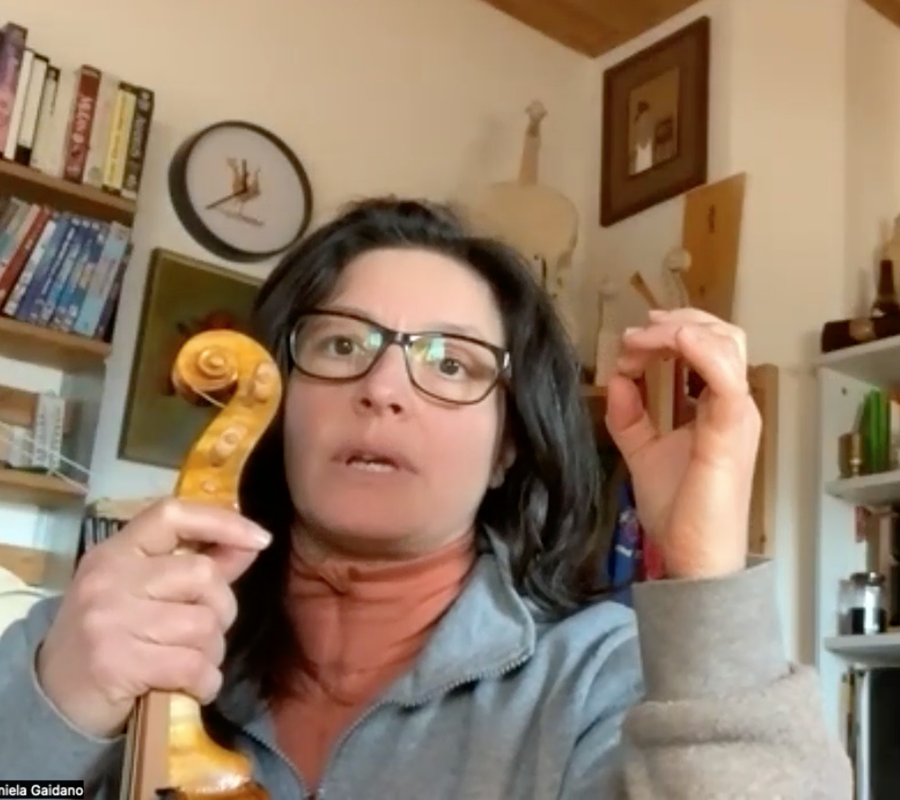
So we continued working with Cindy and she had a question about how to keep her nose in the middle and not losing the violin when making a glissando downwards. We concluded that this also has to do with the shape of the chin rest you use, as we spoke about in the beginning of this zoom session with Ingrid.
It already helped a bit when we tried to keep the violin a bit more toward the centre, to have her chin rest more under her jaw. We spoke about how to do that without creating tension in the shoulder blades. With Maaike, in a previous zoom session, we discovered that this has to do with letting go of the joint between the collarbone and the sternum (breast bone) and Cindy felt that working for her as well. Suddenly it became easier. Cindy remarked that in fact when people are watching beck thesis zoom session, it’s a very good idea to really try the things on your violin while watching. As she watched this session with Maaike but did not try it herself and now that she feels it herself it becomes much more clear.
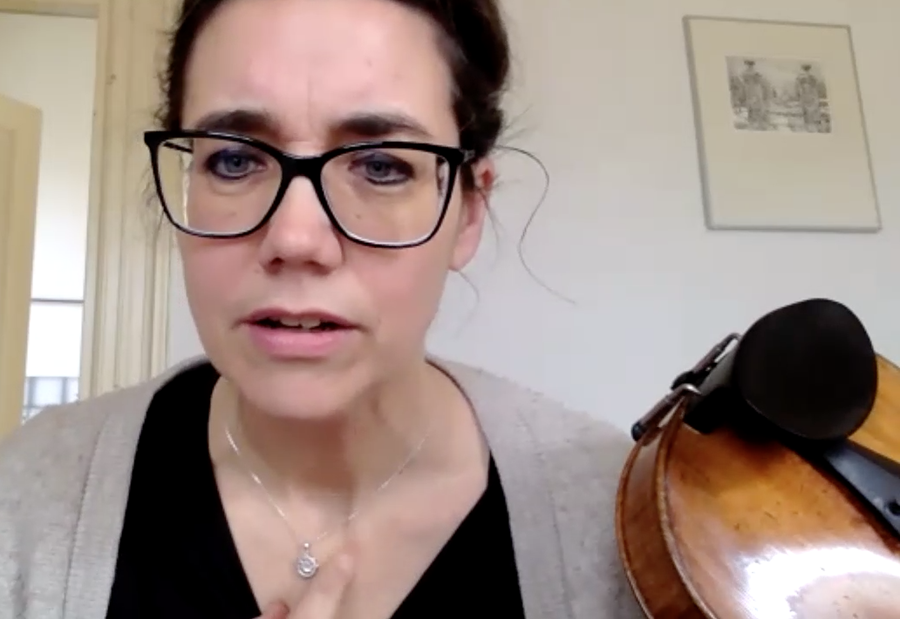
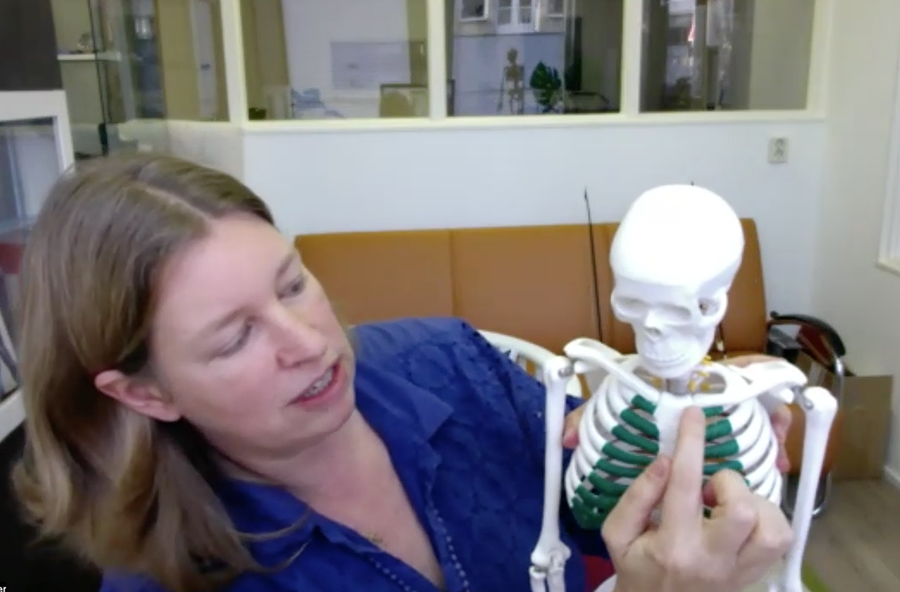
We then spoke about how to touch with the jaw on the chin rest, just like last weeks zoom session. I repeated the steps once more:
1. Keep the violin like baroque violin (chin off, head in balance, thinking up)
2. Allow your head to turn a bit to the left if you prefer
3. Let the head move on top of the atlas vertebra (between your ears) to reach the violin, while you think the scull going up
And in fact, we only use this while doing shifts downwards, because when playing in one postion or with sliding upwards, the head can be completely free. Cindy told that for her that already is very helpful, to think about when she plays in orchestra. She said: “The minute I think of that, I feel more open and free.”
We concluded that it would be a good idea when Cindy would come to my city (Haarlem, not far from where she lives in Amsterdam) and we can try together different chin rests. Ingrid kindly offered that we could use her collection of chin rest she collected in her search for a better one. Ingrid also does not live so far away, so we can easily organise that. Great!
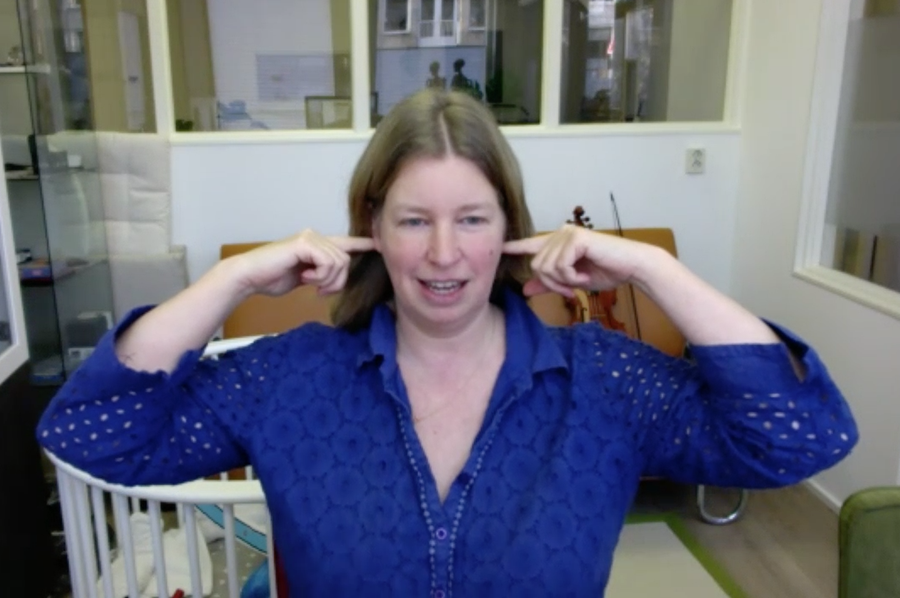
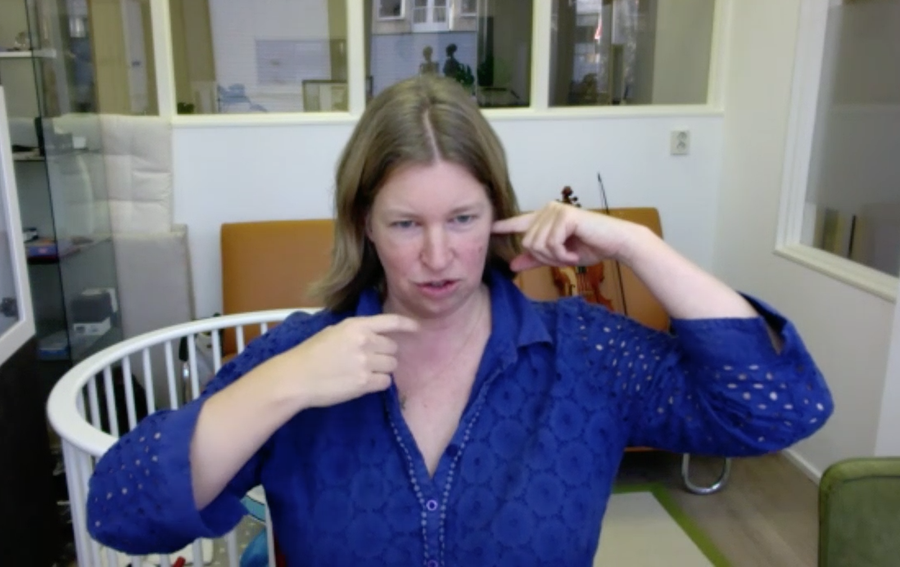
Ingrid shared with us that sometimes now she feels so free, not using the head on the violin, that she sometimes forgets (!) to put the jaw on the chin rest when making a shift downwards. One really has to rewire the brain in order to make that automatically. In my own case, I try to play chin off as much as possible, exactly for this reason. For Ingrid it could be a solution to also do that, to avoid the sticky feeling in the glissando downwards, but I think it is better to acquire both skills, as she plays later romantic music too.
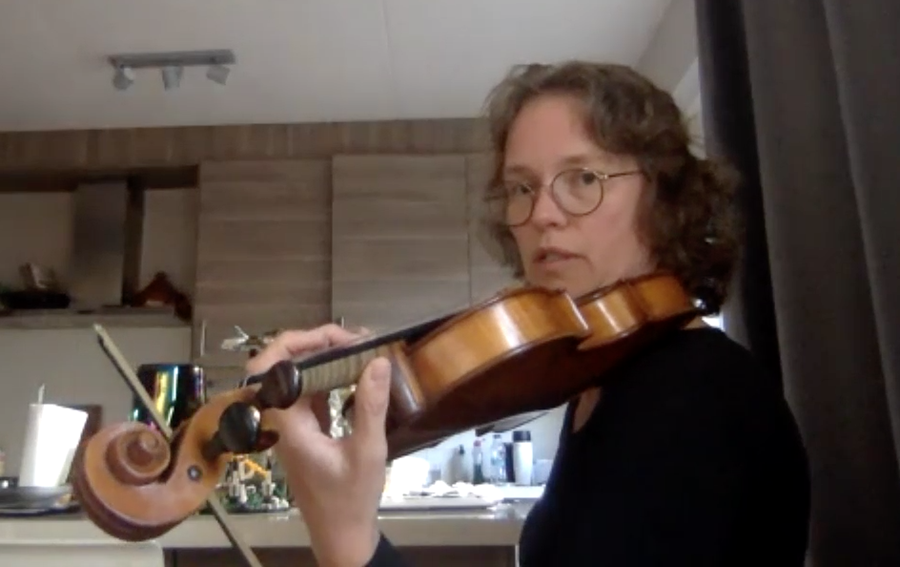
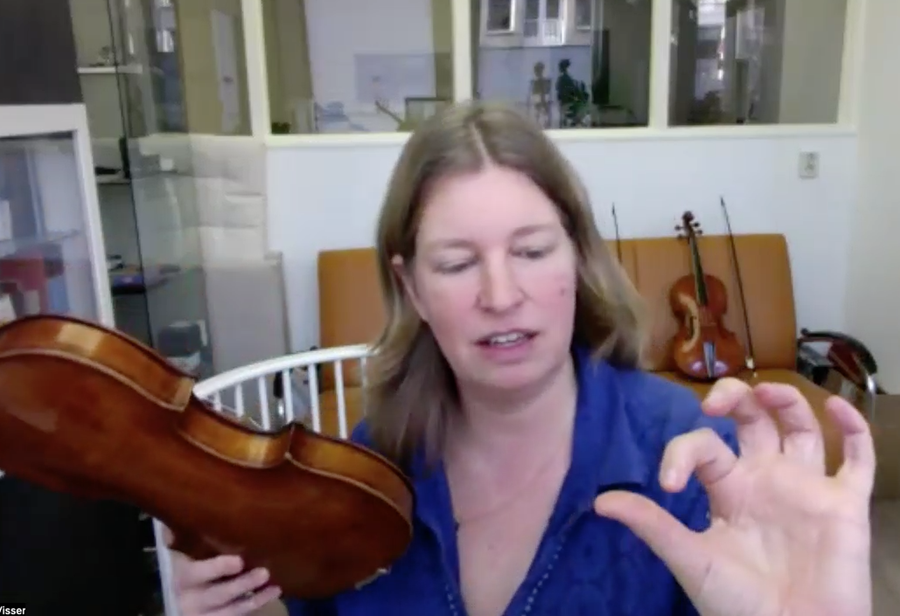
We then worked with Ingrid on the use of her thumb while sliding downwards in the glissando. Sometimes she is losing the contact with the thumb and it slips. I observed that when she starts the movement down, her left wrist is kind of leading the movement, going down first… which creates tension in the hand and makes the thumb collapse in the joints and the contact point becomes too much on the bony part of the thumb ins stead of the soft part. We worked on it to first let the hand itself move back and then follow with the arm in an alined way.
Cindy told us that one of her teachers once said that you have to play in a ‘giving’ way with the left hand, also on the way backwards. It’s an interesting thought.
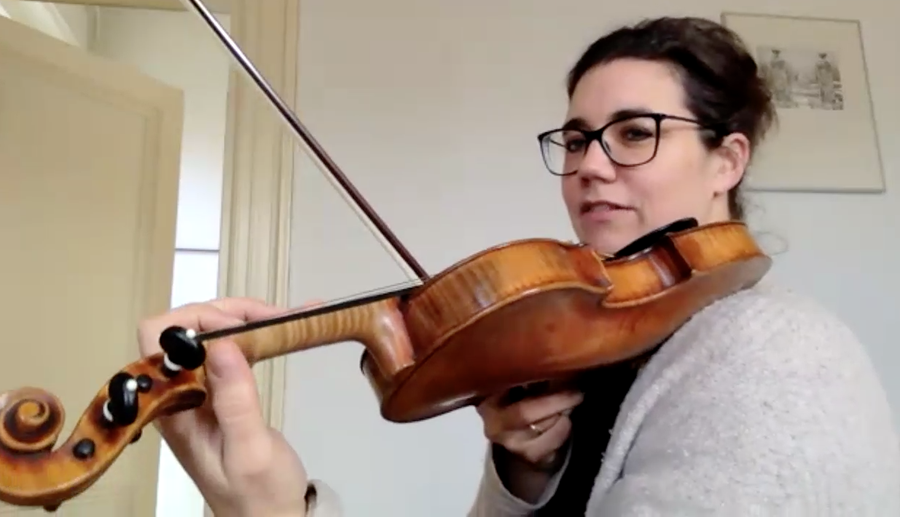
With Cindy also we worked on it and it was interesting that she sometimes has the tendency to first move the fingers backwards and then follow with the thumb, which in fact is how we do this in my other experiment group (playing without using a chin rest). So in fact, I like this way very much, but for later romantic repertoire it’s not always practical.
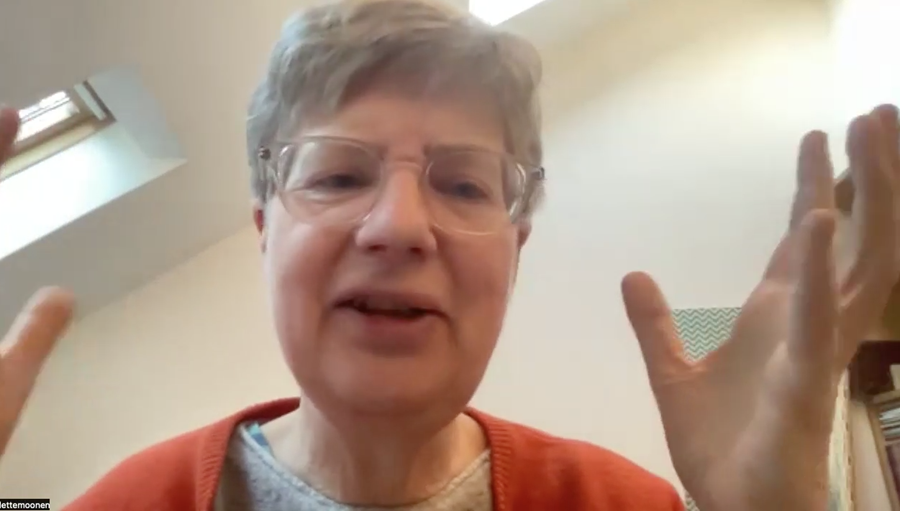
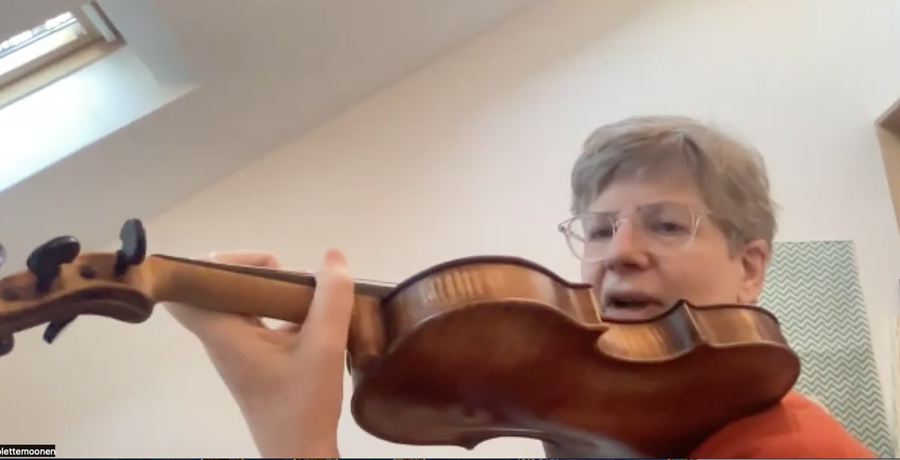
Then Nicolette from London joined our zoom session and told us that in fact she has the last concerts of her playing career coming up… playing Bibers Sorrowful Mysteries, on 5 different violins, which means having several violins in different tunings for every sonata. So unfortunately she will not have much time for our experiment in the upcoming weeks. She uploaded nearly all videos, so that is not a problem.
She also shared with us that my experiment let her experiment with many things and she is now also trying playing the techs in the Paganini caprice with the thumb sticking out high along the neck of the violin as you see on the picture above, supporting the instrument with the second phalanx of the thumb. I think the second phalanx was not designed to support things, as the thumb is (in decimes as well) but it is interesting to see her experiment. I myself feel more freedom in my hand when I use the first phalanx of the thumb while playing the decimes. Anyway, we stay in touch and let’s see how things develop. Of course this way of playing is outside my experiment, we only test one way of supporting the violin here, otherwise it becomes too complicated to measure.
We agreed that it is important not to be rigid and to stimulate independent thinking in the students. We also wondered how to use this technique in starting pupils at a very young age. I think in conservatories and professional training we as teachers need to take much more responsibility for the health of the students and provide them with much more knowledge.
We had an interesting discussion about different approaches to teaching conservatory students: Do we want to give them a lot of options so that in the concert they can see what comes up and feel free to use different ways, or that we have to tell them more clearly how to do something, so that they feel safe and not confused. I see happening in Baroque departments a lot of teachers not giving any clues to students how to support the violin in a healthy and effective way. But at the same time, Nicolette says: “All people learn to walk without having teacher show them how to do it”. So we discussed about teaching them to be curious and find out their own things or giving them the knowledge and insights you have yourself (passed on from many teachers before you) and nurture their own development and discoveries from that point on.
Nicolette also added that herself in her professional training she almost never was asked things like: “How do you feel? What did you discover?”, but the lessons were almost like brainwashing… “do it in this way”. So it’s very important to give them their won responsibility for their learning process as well. Of course we all completely agreed. It’s important to help people to find their way, not to force them to copy your way.
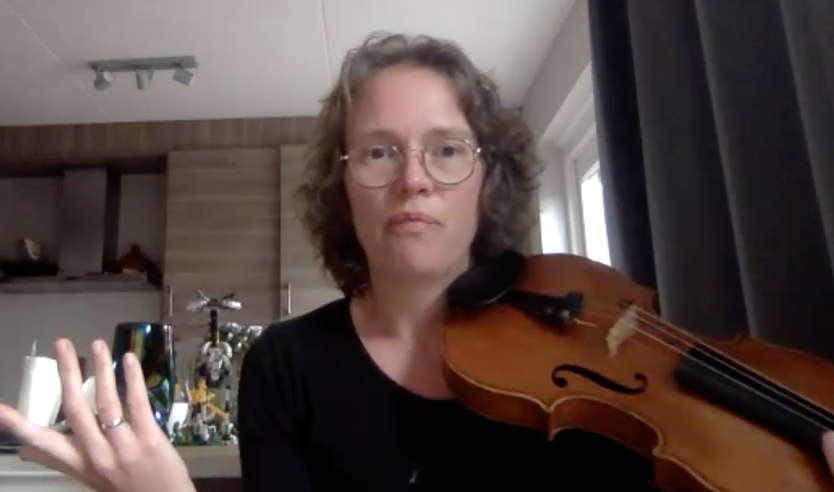
Ingrid added that also in this experiment it is bringing her so much, to think about all things we work on. She already plays her modern violin in a much more chin-off way and she thinks it’s a big gift. Nicolette also feels like that. So we will see where it leads to. Maybe some people in this experiment will play in the end with some cushion under their cloths, for example, it does not matter. The richness is in the discoveries we make during the process. In this research we test one way of playing, but of course no one is obliged to keep playing like that.
Of course we need to warn people if we see the do things that can be harmful as a musician and of course NOT tell them that pain is part of the profession or that musicians have to suffer to be real artists…
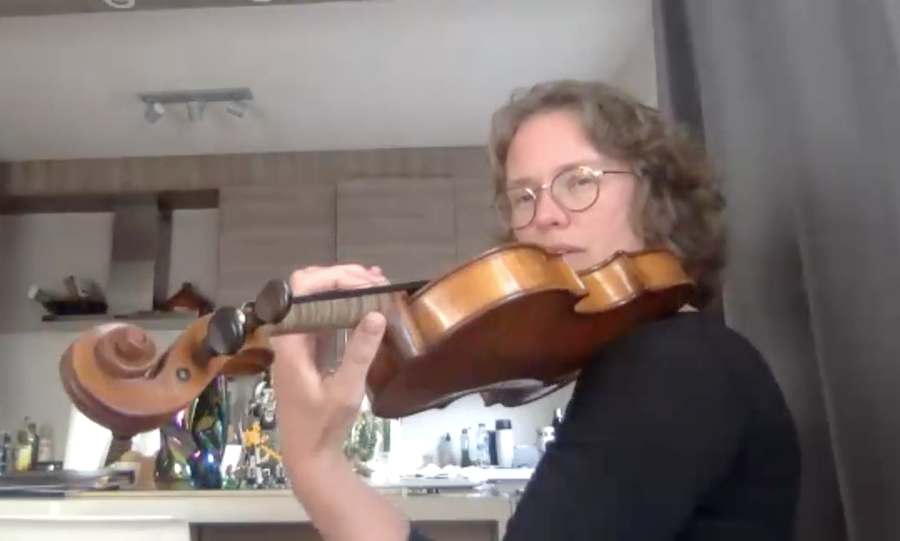
The we worked again on the glissandi with Ingrid and now she felt it and it was working again. So interesting to see the difference with half an hour ago! I think the difference is that she was much more conscious about her thumb and also the fingers went a bit earlier than the thumb, which is very helpful. This also helps the wrist to relax.
We then had an half hour discussion about different school systems for children, especially when they are a bit smarter and sensitive for many stimuli, and how to support them. It’s to much to write it all here and it’s a bit outside our experiment so if you are interested in this, please watch the recording of the zoom session :-)…
Please take your time
It is important that everyone in this experiment enjoys the curiosity we have, and take part in a joyful and playful way. In that way, we learn the best. Don’t try too much to ‘do it right’…and don’t hurry. If you need more time, just let me know, keep me informed, and we take a bit longer. No problem!
Best regards, please let me know if you have questions,
Esther Visser
